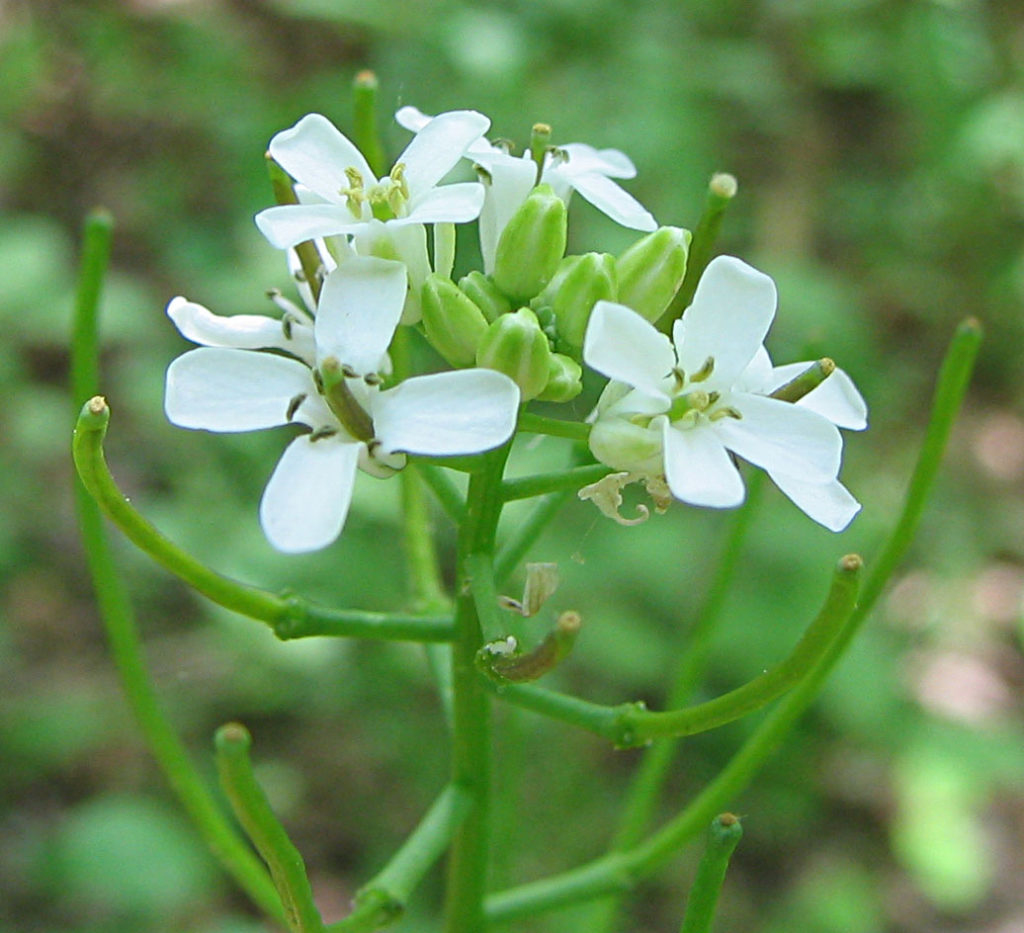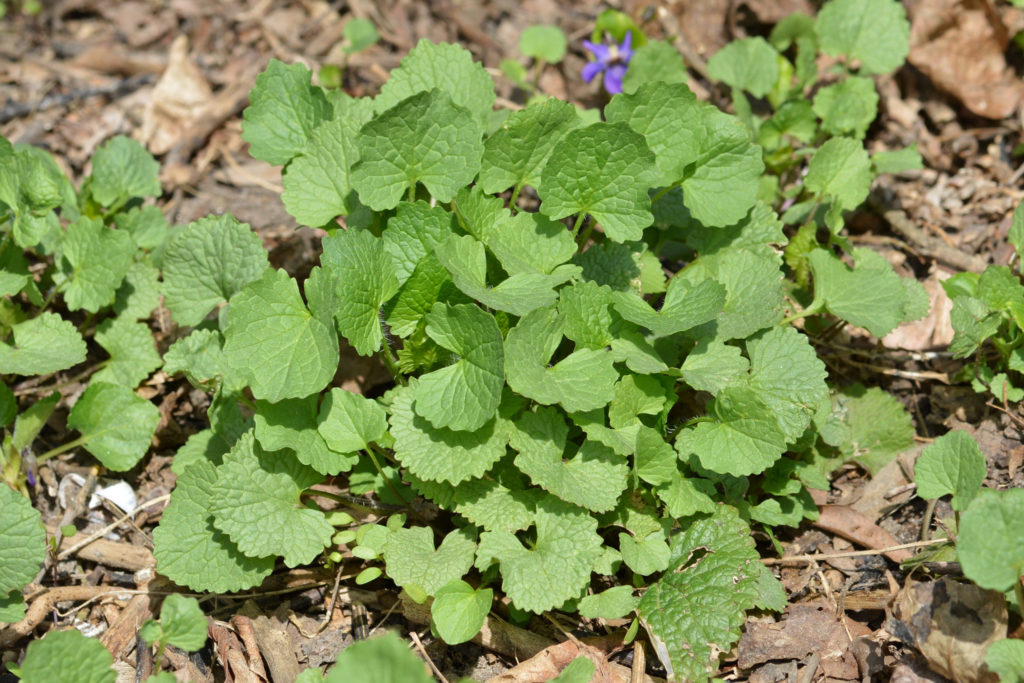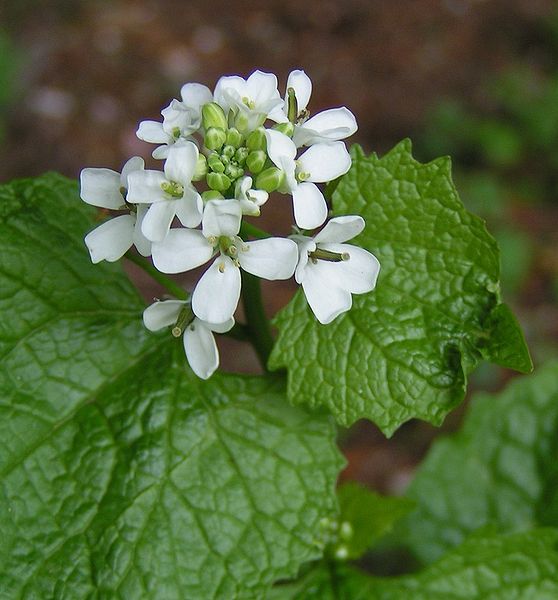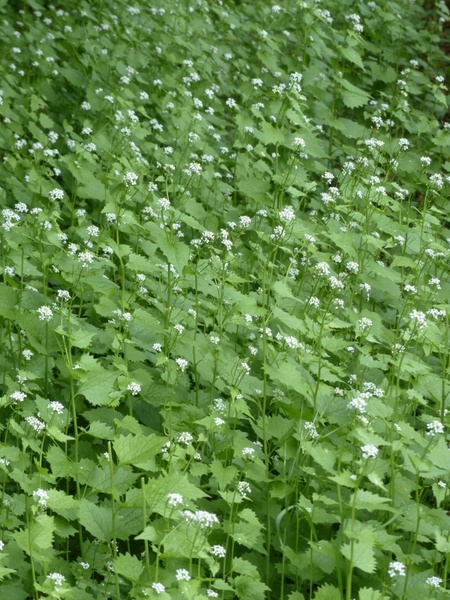 Garlic mustard, which gets its name from the garlicky smell when its leaves are crushed, is one of the most destructive and invasive species in New Jersey.
Garlic mustard, which gets its name from the garlicky smell when its leaves are crushed, is one of the most destructive and invasive species in New Jersey.
Identifying and removing invasive species is critical, both at the Watershed Reserve and in your yard and community.
Invasive plants, many of whom have arrived here from other countries, must be spotted and rooted out. Multiflora rose, Japanese honeysuckle, common privet, and other invasive plants strangle trees and crowd out desirable native plants, said the Watershed’s Stewardship Coordinator Allison Jackson.
Instead, the Watershed staff add native plants such as river oats, Canadian anemone, great blue lobelia, and soft rush. These native plants spread quickly and, hopefully, will outcompete the invasive plants that have encroached in several areas on the reserve.
 An invasive species can be any kind of living organism—a plant, insect, fish, fungus, or bacteria—that is not native to an ecosystem and causes harm. Invasive plants are detrimental to the environment, grow and reproduce quickly, and spread aggressively. Because they have the potential to cause harm, they are labeled as “invasive.”
An invasive species can be any kind of living organism—a plant, insect, fish, fungus, or bacteria—that is not native to an ecosystem and causes harm. Invasive plants are detrimental to the environment, grow and reproduce quickly, and spread aggressively. Because they have the potential to cause harm, they are labeled as “invasive.”
Garlic mustard has distinctive leaves and cross-shaped flowers with four petals. The plant’s roots release a chemical and change the soil conditions in a way that inhibits other plants from growing a biological phenomenon known as allelopathy. The plant spreads aggressively by wind and water and is found growing in both sunny and shady areas.
Garlic mustard spreads rapidly and unfortunately, displaces native or other desired plants in a relatively short period of time. In its two-year cycle, the plants will remain low to the ground initially and, in the second year, will bolt up and produce flowers. The plant self-sows with its seeds from May through June and each plant has the ability to produce hundreds-to-thousands of seeds.
Furthermore, these seeds can remain viable in the soil for  five years or more.
five years or more.
These invasive plants are relatively easy to remove, especially after a rainy spell. Be sure to bag the plants and dispose of the bagged plants in a trash can, not your compost or woods, so the seeds are gone from the property.
The main goal of spotting and yanking out the garlic mustard is to prevent seed development and spreading until the existing seed bank is depleted. Unluckily for us, this may take 2- 5 years in any confined area. Cutting the flowering stems at ground level and pulling plants before they set seed is one method that may be done in smaller areas, but this approach may be too labor-intensive for large patches.
Learn more from Allison in the video below:




